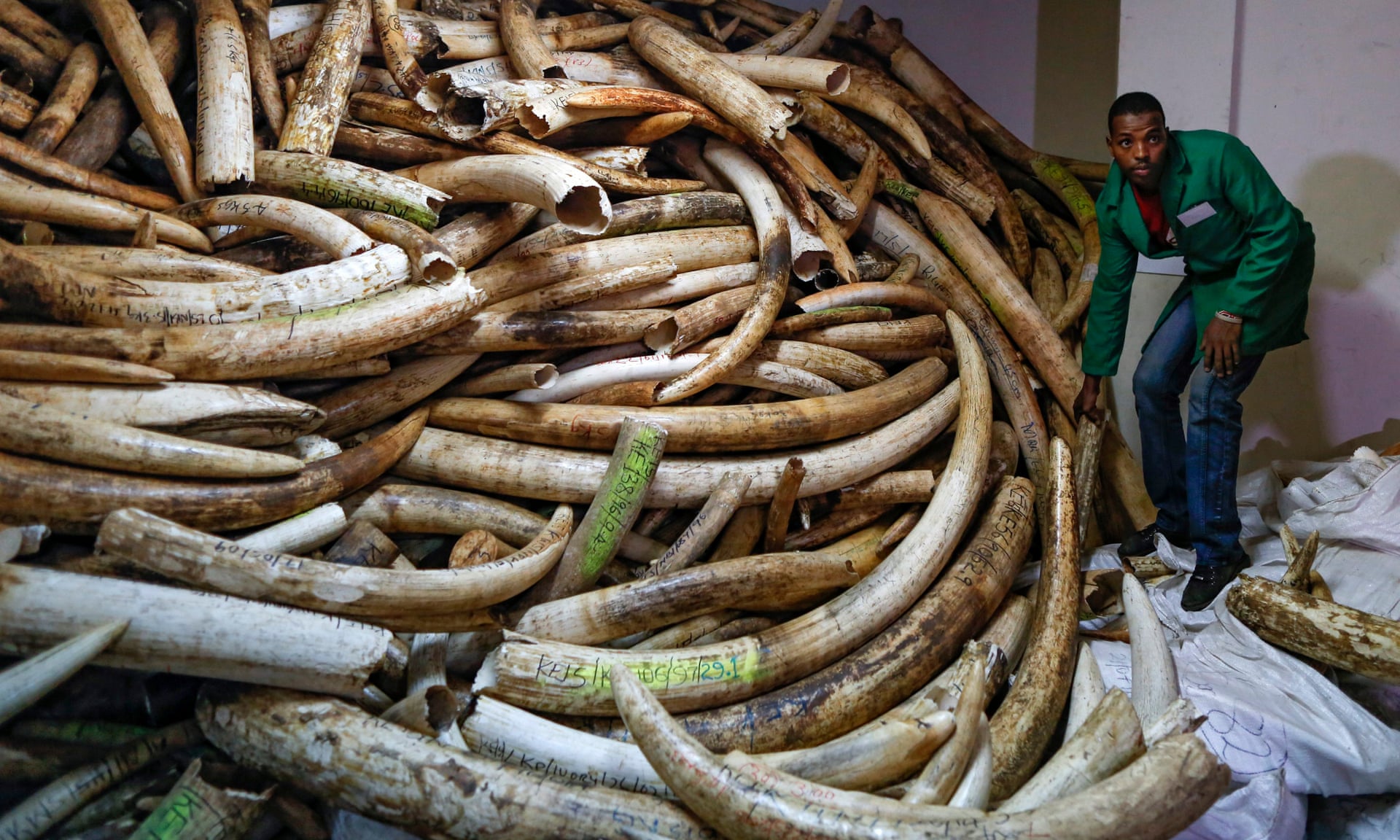 |
| A stockpile of elephant ivory |
Experts have recently confirmed that elephant poaching in Africa has declined for the fifth year in a row. However, they also revealed in their new report from the Convention on International Trade in Endangered Species (CITES) that elephant populations continue to decline because of illegal killing and other anthropogenic activities while seizures of substantial illegal ivory shipments were at record high last year. In East Africa, where elephant numbers have been almost reduced by fifty percent in ten years, illegal killing has dropped back to pre-2008 levels. While elephant numbers are either increasing or stable in southern Africa, the illegal killing remained high in central Africa. The report also indicated that international illegal ivory trade activities stayed as high as in past years, which could be down to a panic auction by traffickers as major countries such as U.S, China, U.K, and Hong Kong have placed domestic bans. There are also reports that the price of ivory has declined by 50% in the past few years. However, there is also proof that ivory is being prepared in Africa for Asian markets with smaller quantities of "worked" ivory already made into ornaments which can be transported through airport check-in and carry-on luggage or by couriers. According to general secretary of CITES, John Scanlon, the decline in elephant poaching indicates "what is possible through sustained and collective frontline enforcement and demand reduction efforts, coupled with strong political support." He further added that the surge in the seizures of illegally traded ivory last year may also be an indication that ivory trafficking has been affected by the possibility of greater restrictions, the immediate domestic ban in several countries, and expectation of continuous drop of price. Therefore, international crime syndicates behind poaching and smuggling might be involved in the panic auction of illegal ivory. According to Colman O'Criodain, wildlife policy manager of the WWF, emphasis is now on closing loopholes that allowed the trade to continue and sanctioning such legislation to ensure that elephant populations do not continue to dwindle.
.jpg/800px-2013_Elephant_population_(30249979363).jpg) |
| African elephant population circa 2013 |
Despite a significant decrease in Africa's elephant poaching, elephant populations are continuously falling. Despite substantial efforts in law enforcement, coupled with strong political support, and immediate domestic ban on ivory in several countries, the killing of elephants for their tusks goes unabated. The perpetrators behind the illegal trade appear to be using small quantities of "worked" ivory to be made into ornaments which can be shipped to Asian markets unnoticed. In addition, a so-called "panic sell-out" of ivory involving international crime syndicates has been going on in response to domestic bans in various countries. This implies that the global ivory trade is still continuing with incidences illegal killings of elephants in centered in central Africa and other parts of the continent to feed the growing demand of ivory in Asia. It is highly essential to put emphasis on shutting down loopholes that enabled the trade to continue and enforcing a legislation that outlaws not just the poaching of elephants, but also the processing and shipping of ivory. With an average of 55 elephants killed everyday, action needs to be taken.
View article here
No comments:
Post a Comment